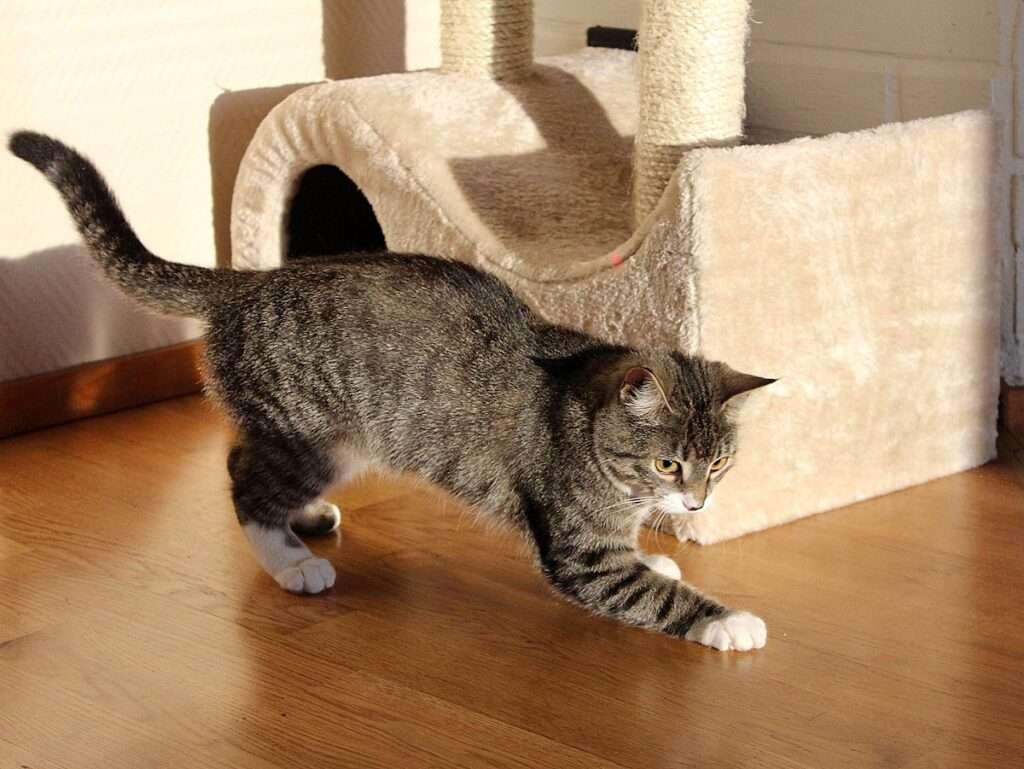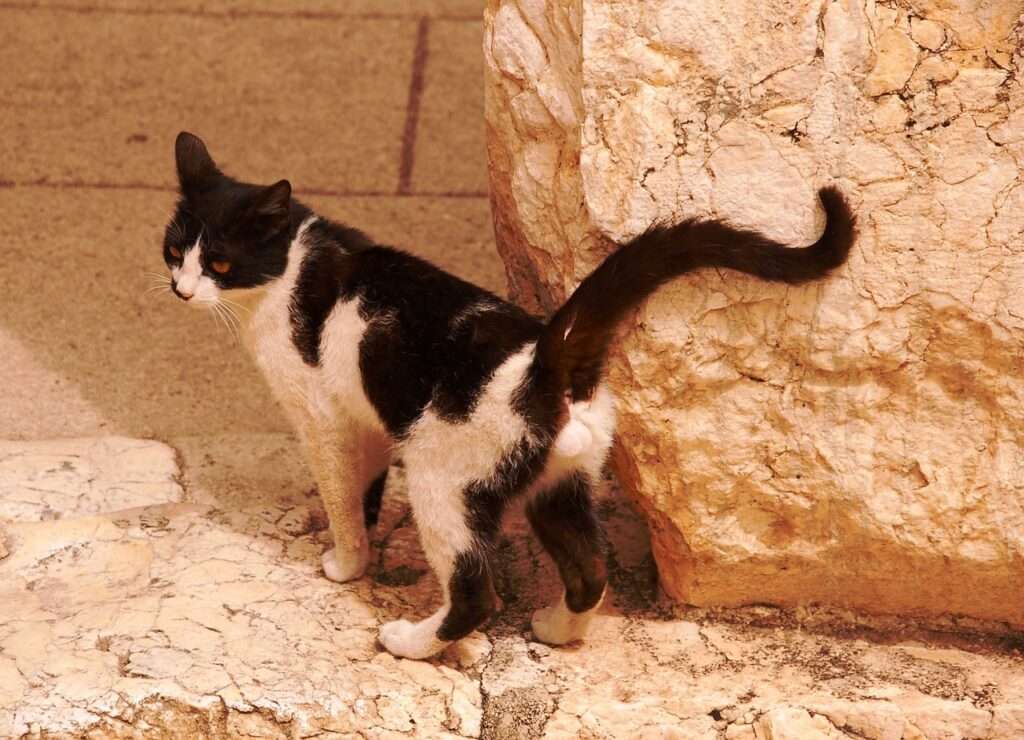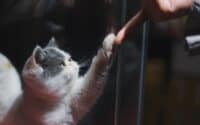A Whiff of Curiosity: What Does Cat Spray Smell Like?
Welcome, fellow feline enthusiasts, to a captivating exploration into the mysterious world of cat spray. We understand that being a cat owner comes with its fair share of joys and challenges and one such challenge is the unmistakable scent of cat spray.
Prepare to uncover the secrets behind this distinctive scent that only a cat parent truly understands. In this intriguing article, we embark on a journey to decipher the enigmatic aroma and shed light on the question that has puzzled many: What does cat spray smell like? So, gather around as we delve into the depths of this olfactory enigma.
The Nature of Cat Spray

Ah, cat spray—the perplexing behavior that often leaves owners scratching their heads in confusion. To truly comprehend the essence of cat spray, we must first grasp its elusive nature. Cat spray, my friends, is the deliberate act of a cat marking its territory with a distinct scent. It is their way of communicating with fellow felines and asserting their presence in the kingdom they call home.
Now, let us differentiate between spraying and urinating, for they are not one and the same. While urination is a natural bodily function to relieve oneself, spraying serves a different purpose altogether. Cats typically spray on vertical surfaces, such as walls or furniture, and often leave behind a small amount of urine mixed with secretions from the scent glands located near their tail.
But why, you might wonder, do cats engage in this curious behavior? The reasons vary, my friends. Cats may spray due to stress, anxiety, or a desire to establish dominance. Unneutered male cats are notorious for their spraying escapades, as they seek to attract potential mates and mark their territory with undeniable prowess.
So, now that we’ve scratched the surface of cat spray behavior, let us venture forth into the realm of its scent, where secrets and surprises await.
The Chemical Composition of Cat Spray
Now, prepare to don your metaphorical lab coat as we delve into the fascinating world of the chemical composition of cat spray. This aromatic concoction is a result of a complex interplay of various compounds secreted by our feline friends. Among these compounds, certain chemicals take center stage in creating the distinctive odor we associate with cat spray.
Intriguingly, cat spray contains pheromones—chemical substances that play a vital role in feline communication. Pheromones act as messengers, conveying information about territory, mating availability, and social status. The presence of these pheromones in cat spray helps our furry companions establish their boundaries and assert their presence in a language that only their fellow felines can fully comprehend.
Unmasking the Scent: What Does Cat Spray Smell Like?
Alas, the moment of truth has arrived! Brace yourselves as we unravel the veil of mystery and answer the burning question: What does cat spray truly smell like? Prepare your olfactory senses for an aromatic adventure like no other.
Cat spray emits a pungent odor that can be described as a potent combination of musky, ammonia-like, and slightly acidic notes. It possesses an unmistakable intensity that can linger in the air, captivating your senses and announcing the feline presence with unwavering confidence. To truly appreciate this unique aroma, one must experience it firsthand—although we must admit, it’s an acquired taste for even the most devoted cat lovers.
When pondering the scent of cat spray, some liken it to the odor of concentrated urine, while others draw comparisons to the distinct aroma of skunks or stale gym socks. However, it’s important to note that the intensity and nuances of the scent may vary depending on factors such as diet, age, and health conditions of the spraying cat.
But fear not, dear readers, for understanding the smell of cat spray is not only an exercise in curiosity but also a means to address and manage this behavior effectively. So, let us journey forth as we explore the factors that influence the strength and variability of cat spray odor, providing you with invaluable insights to navigate this aromatic realm with finesse.
Factors Influencing the Strength and Variability of Cat Spray Odor

The intensity and variability of cat spray odor—a conundrum that both perplexes and intrigues us. To shed light on this aromatic puzzle, we must delve into the factors that contribute to the strength and variability of the scent. Brace yourselves, dear readers, for we are about to uncover the secrets that influence the olfactory experience of cat spray.
Diet plays a significant role in the composition of cat spray odor. The type of food our feline companions consume can subtly alter the chemical makeup of their spray. A diet rich in protein may intensify the scent, while changes in diet can potentially modify its nuances. It is a fascinating dance of flavors and aromas that our feline friends engage in, ultimately shaping the olfactory bouquet they unleash upon their surroundings.
Moreover, age and sex-related differences also contribute to the variability of cat spray odor. Unneutered male cats tend to produce a more potent and robust scent as they assert their dominance and advertise their virility to potential mates. Conversely, neutered males and female cats may produce a milder aroma, as their hormonal changes impact the composition of their spray.
Health conditions can also influence the strength and characteristics of cat spray odor. Certain medical conditions, such as urinary tract infections or kidney disease, can alter the scent and make it more pronounced or unpleasant. It is crucial to monitor our furry companions’ overall well-being and seek veterinary care if any concerns arise regarding their spraying behavior or the odor associated with it.
The Impact of Environment on Cat Spray Odor
The impact of the surroundings on cat spray odor is an intriguing aspect to explore. Temperature and humidity, for instance, can influence the persistence and potency of the scent. In warmer and more humid conditions, the odor may intensify and linger longer, while colder and drier environments may lessen its impact. The surfaces upon which the spray is deposited also play a role in the scent’s absorption and persistence.
Porous materials, such as fabrics or carpets, can absorb the odor, making it more challenging to eliminate. Smooth, non-porous surfaces, on the other hand, may allow for easier cleanup and odor removal. Understanding these nuances can aid in developing effective strategies for managing and neutralizing the scent.
But worry not, for we shall not leave you without guidance. In the following section, we shall delve into the art of eliminating spray odor and offer practical tips and techniques to tackle this aromatic challenge head-on. So, hold your breath for a moment longer as we navigate the world of odor removal and prevention, ensuring a harmonious coexistence between you, your feline companion, and the air you both share.
Coping with Cat Spray Odor: Practical Tips and Solutions
Ah, the time has come to equip you, dear readers, with practical tips and solutions to combat the notorious cat spray odor. While the scent may be formidable, fear not, for there are strategies that can help you navigate this aromatic challenge with grace and ease. Prepare to arm yourselves with knowledge and unleash the power of odor management!
First and foremost, it is essential to recognize the signs of cat spraying. Pay attention to your cat’s behavior, particularly if they exhibit marking behaviors such as backing up to vertical surfaces, treading their paws, or exhibiting signs of restlessness and agitation. By identifying the spraying behavior early on, you can take prompt action to address it effectively.
Managing stress-related spraying is a crucial step towards odor control. Cats may spray as a response to anxiety or changes in their environment. Providing a secure and enriching environment for your feline friend can help alleviate stress and reduce the likelihood of spraying. Consider creating a comfortable space with hiding spots, vertical scratching posts, and interactive toys to promote a sense of security and well-being.
Addressing territorial issues is another key aspect of managing spray odor. Cats may spray to mark their territory, particularly if they feel their domain is being encroached upon by other animals. Gradual introductions, positive reinforcement, and providing separate resources for each cat can help alleviate territorial disputes and minimize spraying incidents.
When it comes to eliminating spray odor, effective cleaning techniques are paramount. Begin by blotting the affected area with paper towels to remove excess moisture. Then, apply an enzymatic cleaner specifically formulated to break down the proteins in cat spray. Ensure thorough coverage of the area and follow the instructions provided by the cleaner manufacturer. Additionally, consider using air purifiers or deodorizers to help neutralize any lingering odors in the surrounding space.
Seeking Professional Help: When to Consult a Veterinarian or Animal Behaviorist
In some cases, managing cat spray odor may require the expertise of a veterinarian or animal behaviorist. There are instances when professional intervention is necessary to address underlying medical conditions or behavioral issues that contribute to excessive spraying. Remember, dear readers, there is no shame in seeking assistance—it is a testament to your commitment to your feline companion’s well-being.
If you observe persistent or sudden changes in your cat’s spraying behavior, it is advisable to consult with a veterinarian. They can conduct a thorough examination to rule out any underlying health concerns, such as urinary tract infections or hormonal imbalances, which may contribute to increased spraying.
For behavioral challenges related to spraying, an animal behaviorist can be a valuable resource. These professionals possess a deep understanding of feline behavior and can provide guidance on implementing behavior modification techniques tailored to your cat’s specific needs. They can help you identify triggers, develop strategies to manage spraying behavior, and create an enriched environment that promotes positive feline interactions.
Remember, dear readers, professional help is not a sign of defeat, but rather a proactive step towards fostering a harmonious and scent-free living space. Embrace the guidance and expertise of these professionals, and together, we shall triumph over the challenges of cat spray odor!
Stay tuned for the upcoming sections, where we dive into real-life stories, offer additional resources, and conclude our exploration into the captivating world of cat spray odor.
Real-Life Stories: Cat Owners’ Experiences with Spray Odor
What better way to connect and empathize than by sharing real-life stories from fellow cat owners who have embarked on their own journeys with spray odor? Let us dive into the personal experiences and anecdotes that shed light on the challenges and triumphs of living with cats who spray.
Meet Lisa, a dedicated cat lover who faced the daunting task of managing spray odor in her home. With patience and persistence, she implemented various strategies, from environmental enrichment to diligent cleaning routines, gradually reducing the frequency of spraying incidents. Lisa’s story reminds us that with dedication and a little creativity, it is possible to navigate the complexities of cat spray odor.
Then there’s Mark, whose male cat, Max, became increasingly territorial as he reached maturity. Mark sought the guidance of an animal behaviorist, who helped him implement a behavior modification plan tailored to Max’s specific needs. Through a combination of positive reinforcement, environmental adjustments, and structured introductions, Mark successfully managed Max’s spraying behavior and restored harmony in their home.
These stories and countless others serve as a testament to the resilience and commitment of cat owners in the face of spray odor challenges. They remind us that with knowledge, understanding, and the support of the feline-loving community, we can overcome the obstacles that come our way.
Conclusion
Dear readers, we have embarked on a captivating journey through the intricate world of cat spray odor, seeking answers to the burning question: What does it really smell like? Along the way, we have unraveled the nature of cat spray, explored its chemical composition, and delved into the factors that influence its strength and variability.
We have discovered that cat spray odor possesses a pungent blend of musk, ammonia, and acidity, leaving an indelible mark on the air and our olfactory memories. We have explored the impact of diet, age, and environmental factors on the scent, equipping ourselves with practical tips and solutions to cope with this aromatic challenge.
Furthermore, we have emphasized the importance of seeking professional help when necessary, reminding ourselves that the expertise of veterinarians and animal behaviorists can be instrumental in understanding and managing spray odor effectively. Through real-life stories and shared experiences, we have witnessed the triumphs and resilience of cat owners who have tackled spray odor head-on, paving the way for others to follow in their footsteps.
As we conclude this olfactory odyssey, let us remember that the journey does not end here. It is a continuous exploration, an ongoing commitment to understanding our feline companions and creating a harmonious environment where both cats and humans can thrive.
So, as we become armed with knowledge, compassion, and the love we hold for our furry friends, let us embark on this aromatic adventure with confidence and grace. Together, we shall navigate the mysteries of cat spray odor, creating a world where scents intertwine and the bond between cats and their devoted owners remains unbreakable.
Frequently Asked Questions
Q: Is cat spray odor permanent?
A: Cat spray odor is not necessarily permanent. With prompt and thorough cleaning using enzymatic cleaners designed to break down the proteins in the spray, the odor can be effectively eliminated. However, it is essential to address the underlying causes of spraying behavior to prevent future incidents.
Q: Can neutering or spaying a cat prevent spraying?
A: Neutering or spaying a cat can significantly reduce the likelihood of spraying behavior. Unneutered male cats are more prone to spraying as they mark their territory and communicate their availability to potential mates. Spaying female cats also reduces hormonal influences that can contribute to spraying behavior.
Q: How can I prevent my cat from spraying?
A: Preventing spraying behavior involves addressing the underlying causes and creating a conducive environment for your cat. Providing environmental enrichment, such as scratching posts, vertical spaces, and interactive toys, can help alleviate stress and reduce spraying. Additionally, gradual introductions when introducing new pets and ensuring each cat has their own resources can minimize territorial conflicts.
Q: When should I consult a veterinarian or animal behaviorist?
A: It is advisable to consult a veterinarian or animal behaviorist if you notice persistent or sudden changes in your cat’s spraying behavior, or if you suspect underlying medical conditions. They can provide a thorough examination, diagnose any health issues, and offer guidance on behavior modification techniques tailored to your cat’s specific needs.
Additional Resources and References
As our exploration into the realm of cat spray odor draws to a close, we would be remiss not to provide you with a treasure trove of additional resources and references. These invaluable sources of information will further enhance your understanding and empower you to conquer the challenges associated with cat spray odor. So, without further ado, let us unveil a plethora of resources to aid you on your ongoing journey.
- “Cat Spraying: Causes and Solutions” by International Cat Care – A comprehensive guide that delves into the reasons behind cat spraying behavior and offers practical solutions to address it effectively. Available at: https://icatcare.org/advice/spraying/
- “The Cat Whisperer: Why Cats Spray and How to Stop It” by Mieshelle Nagelschneider – A must-read book that delves into the psychology behind cat spraying and provides step-by-step strategies to prevent and manage this behavior. Find it at your local bookstore or online retailers.
- “Feline Behavior Guidelines” by American Association of Feline Practitioners – An authoritative resource that provides insights into feline behavior and offers guidance on understanding and addressing spraying behavior. Access it at: https://catvets.com/guidelines/practice-guidelines/behavior-guidelines
- “How to Get Rid of a Cat Spraying Smell” by Feliway – A step-by-step guide on eliminating cat spray odor from various surfaces using effective cleaning techniques and recommended products. Discover it at: https://blog.feliway.com/au/how-to-get-rid-of-a-cat-spraying-smell-6-tips
These resources, dear readers, will serve as invaluable companions on your quest to conquer cat spray odor. Remember, knowledge is power, and armed with the insights gleaned from these references, you are well-equipped to navigate the challenges that may arise.
Disclaimer: The resources and references provided above are intended for informational purposes only. For specific advice and guidance regarding your individual situation, we recommend consulting with a qualified veterinarian or animal behaviorist.





